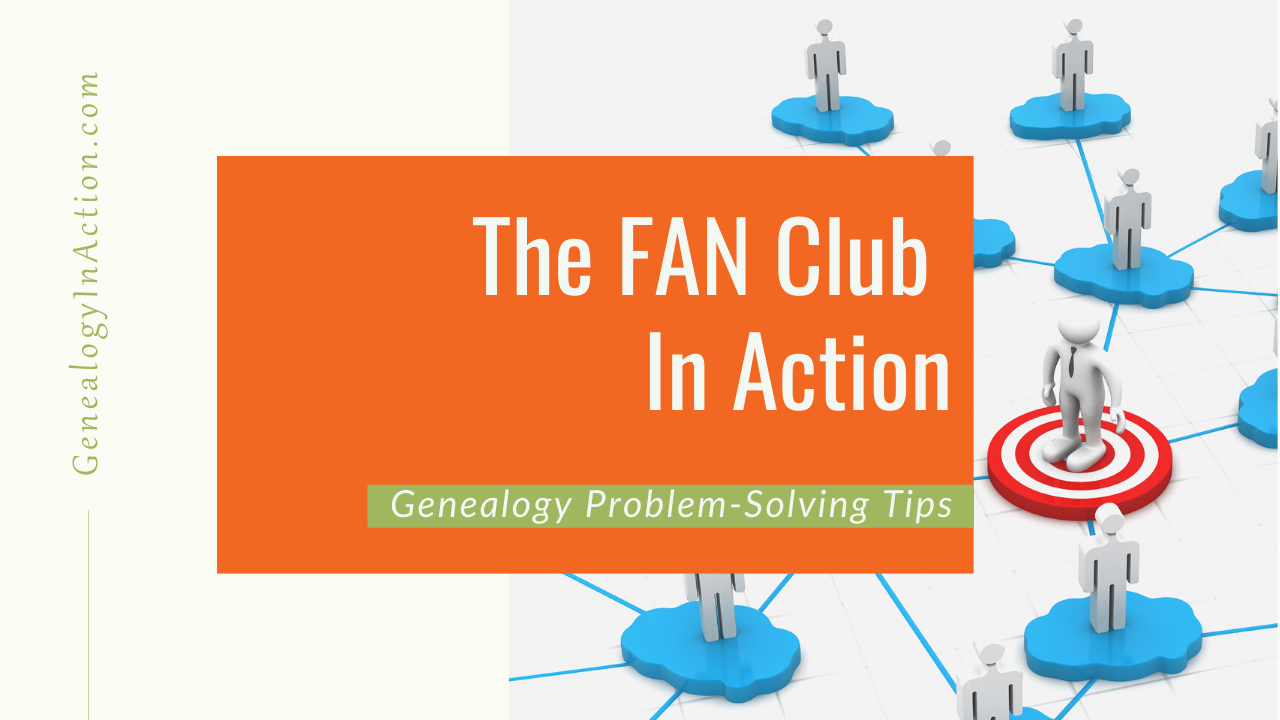
FAN Club In Action
Aug 11, 2021FAN Club is a phrase coined by Elizabeth Shown Mills. FAN represents family/friends, associates, and neighbors—the people that were part of your ancestor’s social network. By including these people in your research, you may uncover clues that can help answer questions of identity, relationship, origin, and more.
Solomon Norton is most likely my sixth great-grandfather, but I've had trouble proving the relationship to him and his daughter Sarah, my fifth great-grandmother. There are mentions of this relationship in a few not-so-trustworthy sources (like family histories, old DAR applications, and other people's family trees), but nothing truly solid. I can't even support this conclusion with indirect evidence, and believe me, I've tried.
Years ago I started to try and prove connections between Sarah and her siblings, figuring if I could prove a few of those and could prove their connection to Solomon, that would support the conclusion. So far, I've not found any solid connections between Sarah and the six known siblings I've investigated. So much for the FAN Club—at least the family portion of it!
Or is it?
I started to investigate the children of those six siblings and I came across a biography in a county history that is quite interesting! There is a lengthy bio for DeWitt C. Norton in the Commemorative Biographical Record of the Counties of Huron and Lorain, Ohio (J. H. Beers & Co., 1894). DeWitt is the son of James R. Norton, who is a known son of Solomon. And wouldn't you know, Solomon is mentioned in DeWitt's bio. Even better, there's a whole paragraph on Solomon that provides some interesting clues that could help me in my quest to prove the connection between Solomon and Sarah. (Side note: This is not an uncommon occurrence. I have several examples of biographies that contain detailed information on the subject's father, grandfather, and sometimes even further generations.)
Some of the things I already knew, such as Solomon's move to Vermont, where he had a saw mill and grist mill, and that he was married to Sarah Rexford. I had reason to believe he remarried at some point, and the bio notes that he had three wives—new clue! It also mentions that Solomon and his wife Sarah had thirteen children—you'll recall I only know of six, plus my Sarah. It's possible that these unknown-to-me children died young and therefore may not help me prove a connection to my Sarah and those siblings. But, I really need to explore this further. At the same time, I'm a little leery of this information because the bio mentions that Solomon lived out his days in Shoreham, Vermont. This is not so—he actually died in Chautauqua County, New York, in 1844 (and he was living there in 1840; pension and other records also confirm this).
So, are there six other children? Possibly. Was there another wife that I don't know about? Possibly. These are certainly things I need to follow up on.
This is a very simple example of the FAN Club in action. BUT, had I not studied more people in Solomon's FAN Club, I would not have found this bio for his grandson DeWitt that led to these additional clues. Now I need to spend some time building a research plan focused on identifying these missing children, and from there, study them and see if I can find a connection between any of them and my Sarah. Fingers crossed!
I like to create a master list of FAN Club members for each person in my tree. I'd like you to consider doing the same. Get started by taking the project you're working on right now and develop a list of FAN Club members. Again, these are the family/friends, associates, and neighbors. Each time you work on a new project that needs a master FAN Club list, take a moment to create one. Keep in mind that this list is dynamic and will change over the course of your research.
P.S. The FAN Club is part of the problem-solving framework I teach in my digital course Genealogy Problem-Solving Academy. I show you how to create a list, how to analyze it, and how to incorporate relevant people into your research plan. To learn more about the Academy, head over to https://www.genealogyinaction.com/academy.
© Julie Tarr. This article was first published at Genealogy In Action; appearance of this article elsewhere, without my permission, violates copyright.